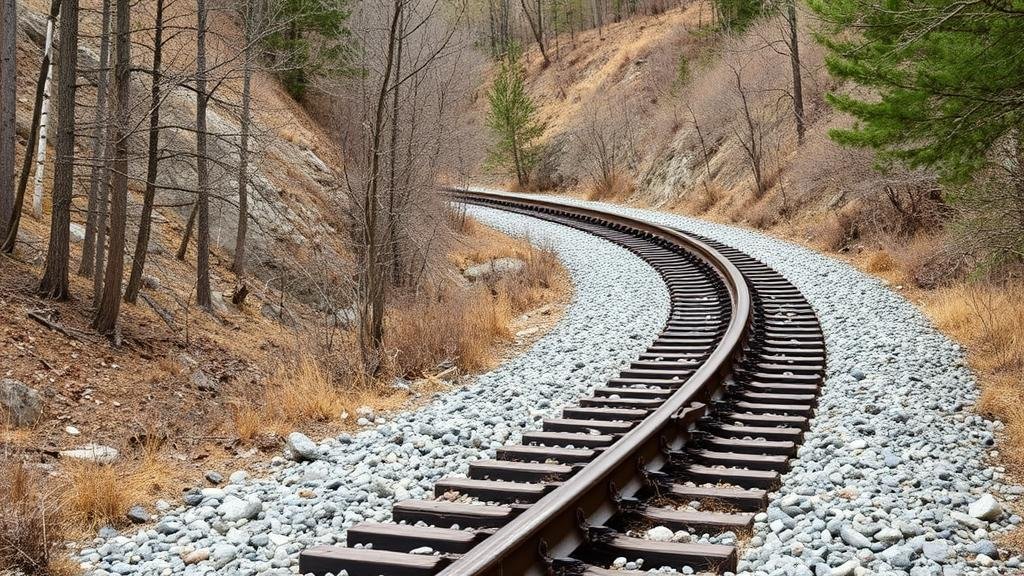Detecting for Gold and Silver in Abandoned Mining Railroads
Detecting for Gold and Silver in Abandoned Mining Railroads
The quest for precious metals such as gold and silver within abandoned mining sites presents a unique opportunity for metal detectorists and historians alike. This article aims to provide a comprehensive guide on detecting for these precious resources specifically in areas associated with abandoned mining railroads. With a historical context, practical techniques, and consideration of environmental and legal factors, readers will gain a well-rounded understanding of this fascinating intersection of history and prospecting.
Historical Context of Mining Railroads
The rise of mining in the 19th and early 20th centuries led to the proliferation of railroads that facilitated the transportation of ores and minerals. For example, the Comstock Lode in Nevada, discovered in 1859, was heavily serviced by rail lines, enabling rapid extraction and shipment of silver. Railroads were often constructed to connect mining towns to larger markets and ports, creating a network that stimulated economic growth. Many of these rail lines became obsolete after the mines were depleted, leaving behind historical relics and potentially undiscovered treasures.
Detecting for Gold and Silver: Techniques and Tools
Metal detecting in these historical areas requires specialized knowledge and equipment. Here are some recommendations:
- Metal Detectors: Use advanced metal detectors capable of identifying precious metals. Devices such as the Minelab CTX 3030 or Garrett AT Gold are particularly effective for gold and silver detection.
- Ground Penetrating Radar (GPR): Utilizing GPR can reveal buried structures and remnants associated with former railroads, including rail spikes and discarded tools.
- Digging Tools: Equip yourself with proper digging equipment to recover items without damaging historical artifacts.
Identifying Potential Locations
The location of railroads may offer clues to where gold and silver might be found. Focus on specific areas such as:
- Old Loading Docks: These sites were busy areas for transporting mined materials, making them potential hotspots for finding remnants of mined ores.
- Abandoned Train Stations: Train stations in mining towns could hold artifacts from miners and rail workers, including tools and coins.
- Disused Sidings: Look for sidings where trains would have been loaded or unloaded, providing opportunities to discover discarded materials.
Legal and Ethical Considerations
Before embarking on a prospecting mission, its crucial to understand the legal framework surrounding metal detecting in abandoned areas. In many regions, laws prohibit digging or removing artifacts from historical sites. Here are a few guidelines to follow:
- Research Local Laws: Check federal, state, and local regulations about metal detecting and the preservation of historical sites.
- Obtain Permissions: Whenever possible, seek permission from landowners or relevant authorities; this is particularly important on private property.
- Practice Conservation: Leave historical artifacts in their location unless youre legally permitted to remove them. Reporting findings to local historical societies can also help preserve your discoveries for future generations.
Case Studies: Successful Discoveries
Numerous examples exist that underscore the potential for discovering gold and silver in abandoned railroad areas. One notable case is a hobbyist who discovered a stash of gold coins near an abandoned railway bed in California. This find consisted of approximately 20 gold coins, each dating back to the mid-1800s, originating from the Gold Rush era. Similarly, in numerous reports from the Nevada mines, metal detectorists have uncovered silver ingots that were left behind by miners due to hasty operations. e case studies reveal the potential riches that lie waiting for the curious and diligent prospectors.
Actionable Takeaways
Detecting for gold and silver in abandoned mining railroads can be a rewarding venture that combines elements of thrill, history, and preservation. Key actions for successful detecting include:
- Invest in high-quality metal detecting equipment designed for locating precious metals.
- Research the historical background of mining railroads in your area to identify optimal search locations.
- Ensure compliance with all legal restrictions and ethical guidelines to protect historical integrity.
With the right approach, you may not just uncover precious metals but also unearth pieces of history that contribute to the narrative of industrial change in America.



